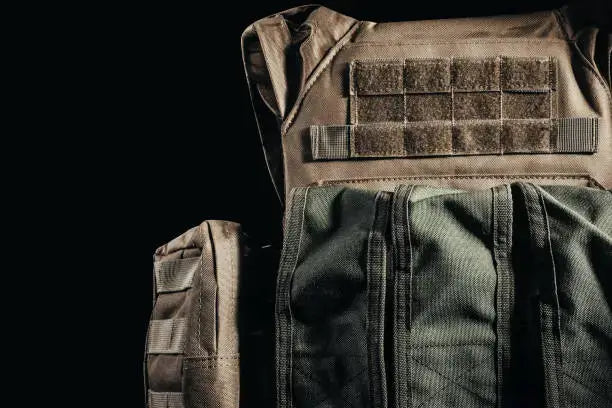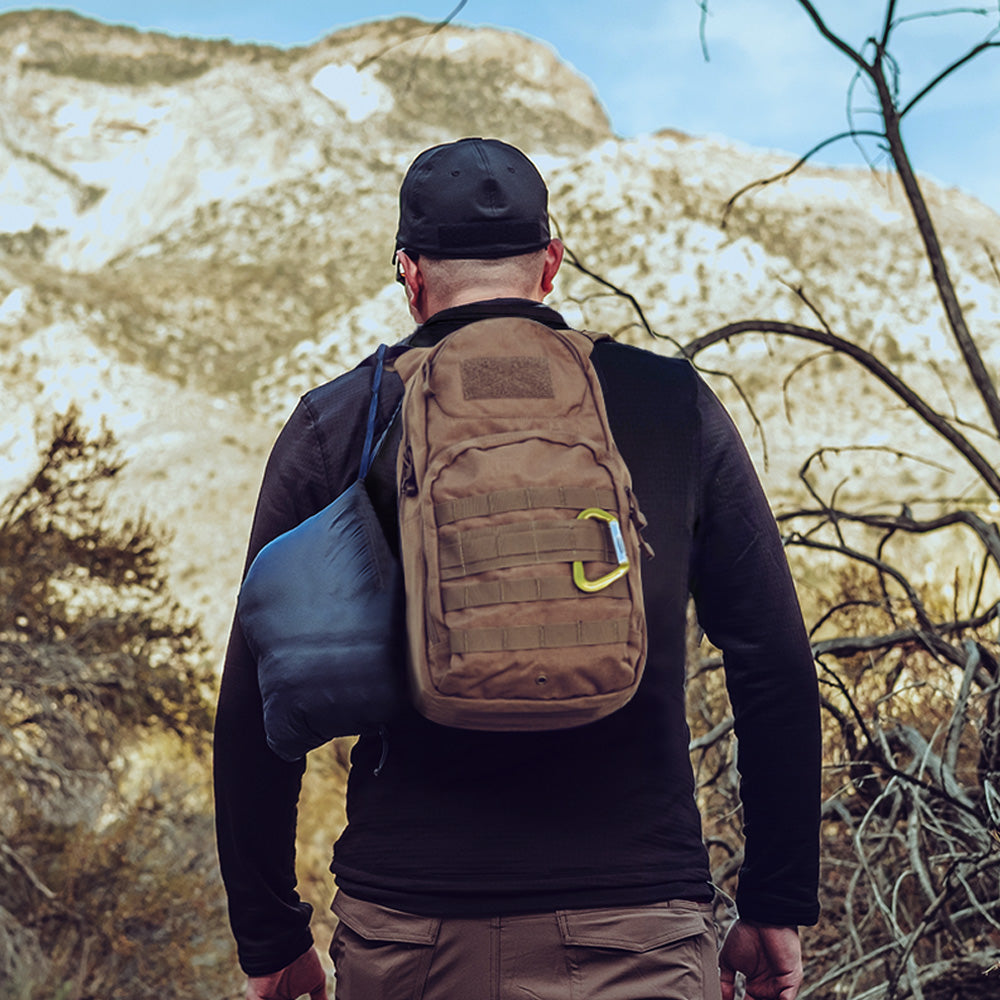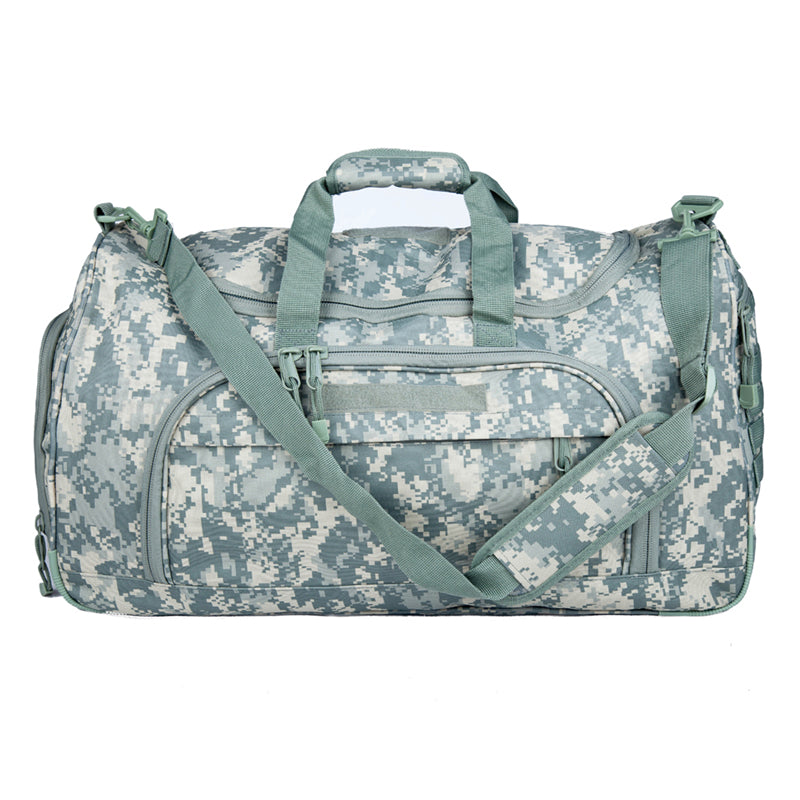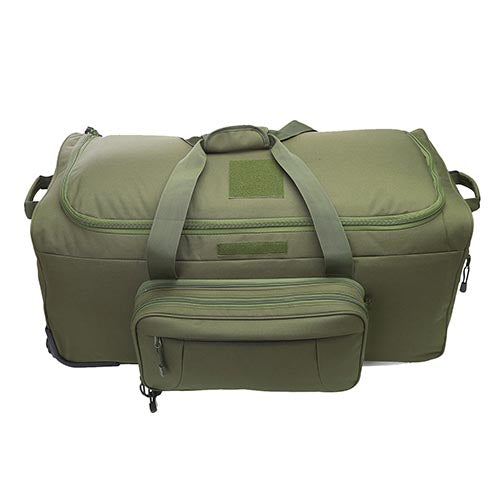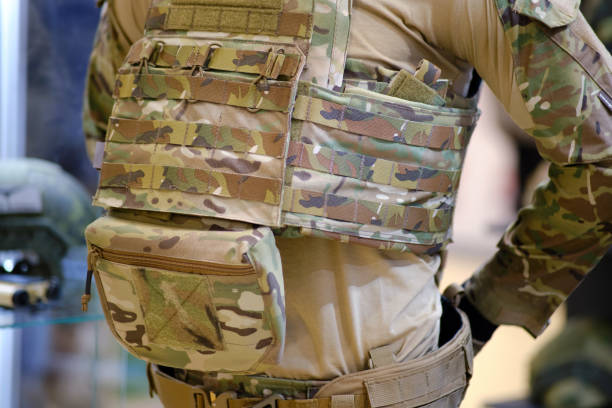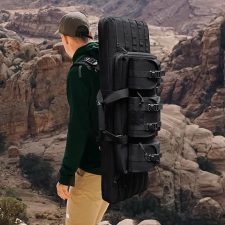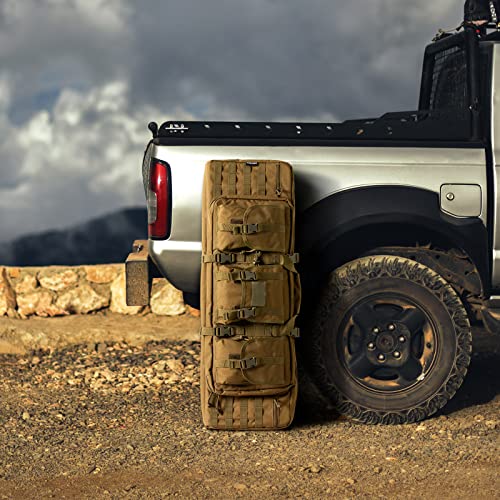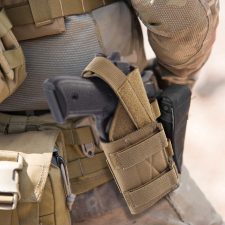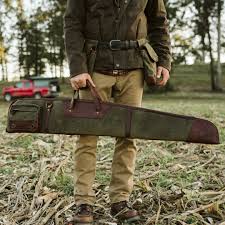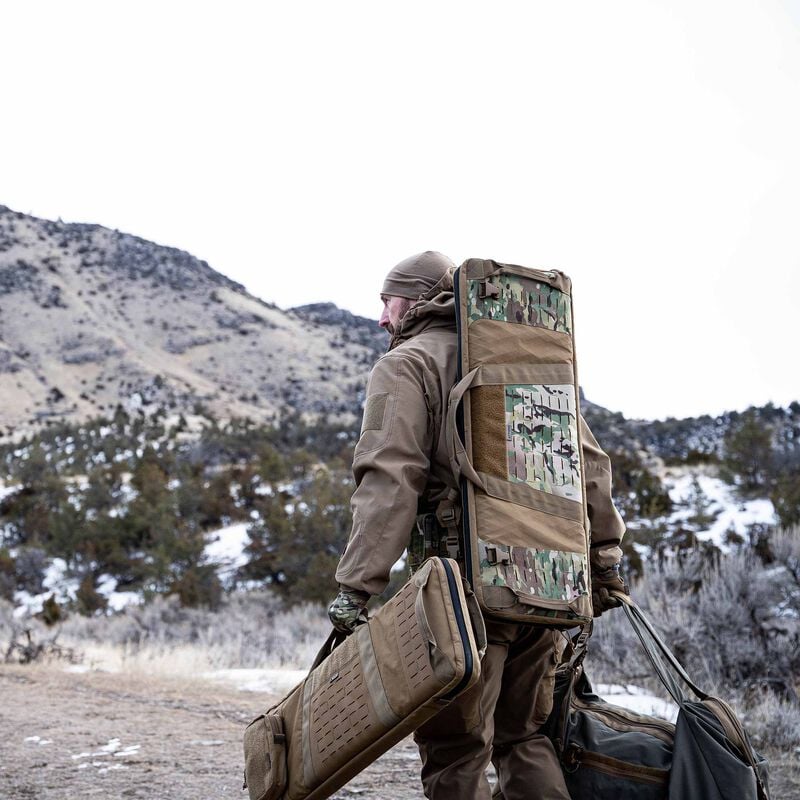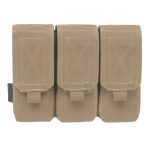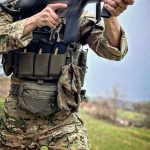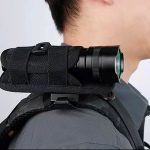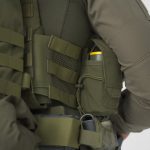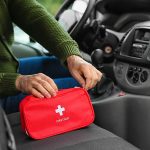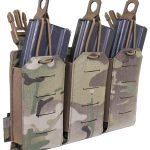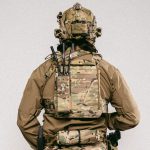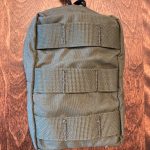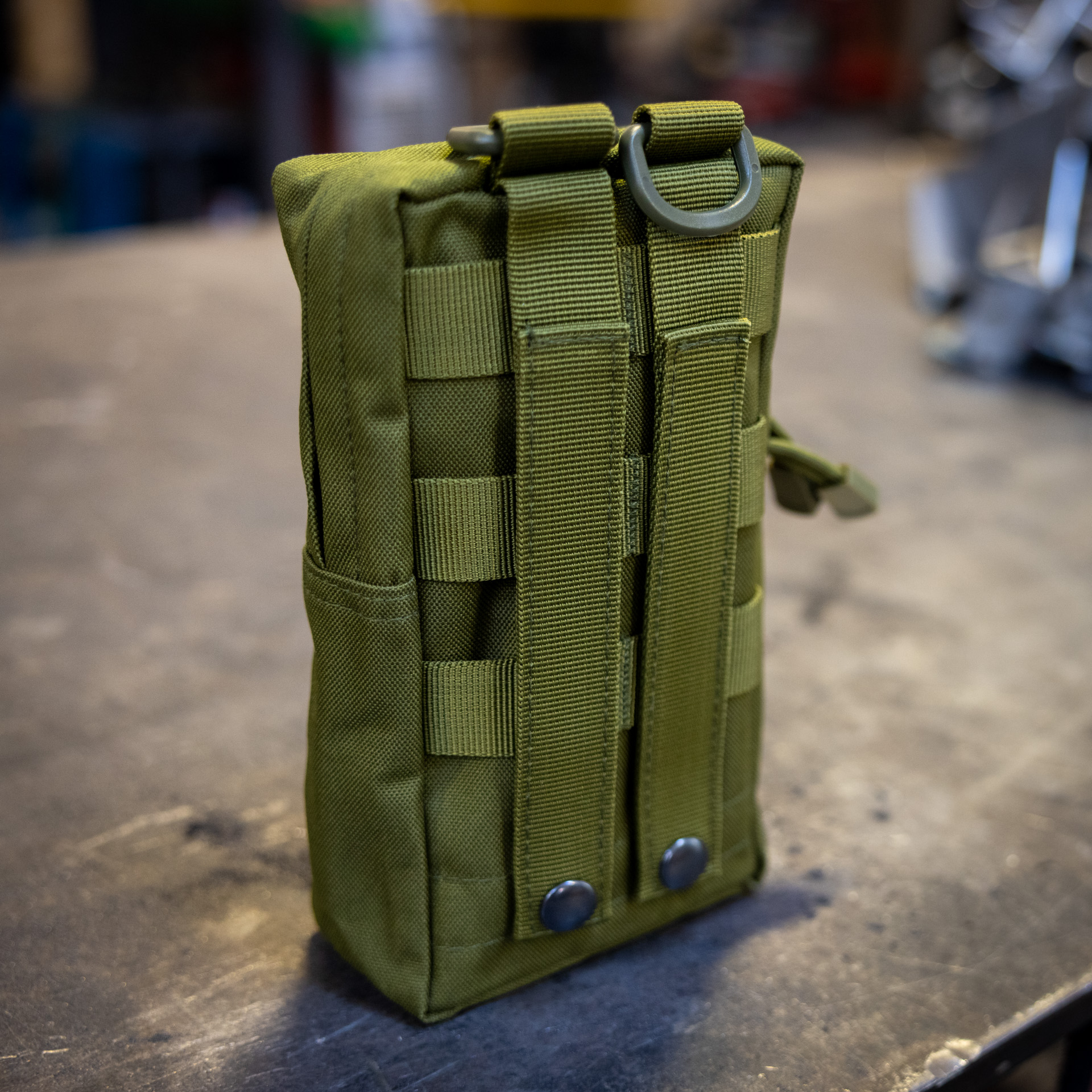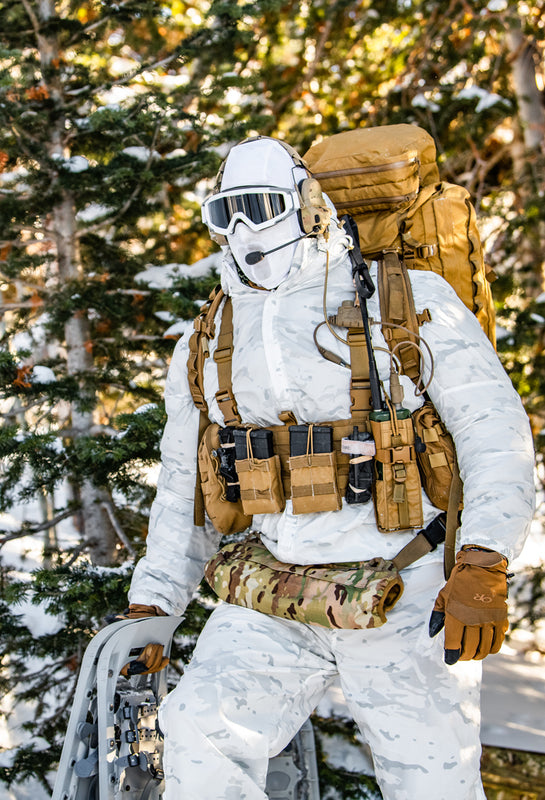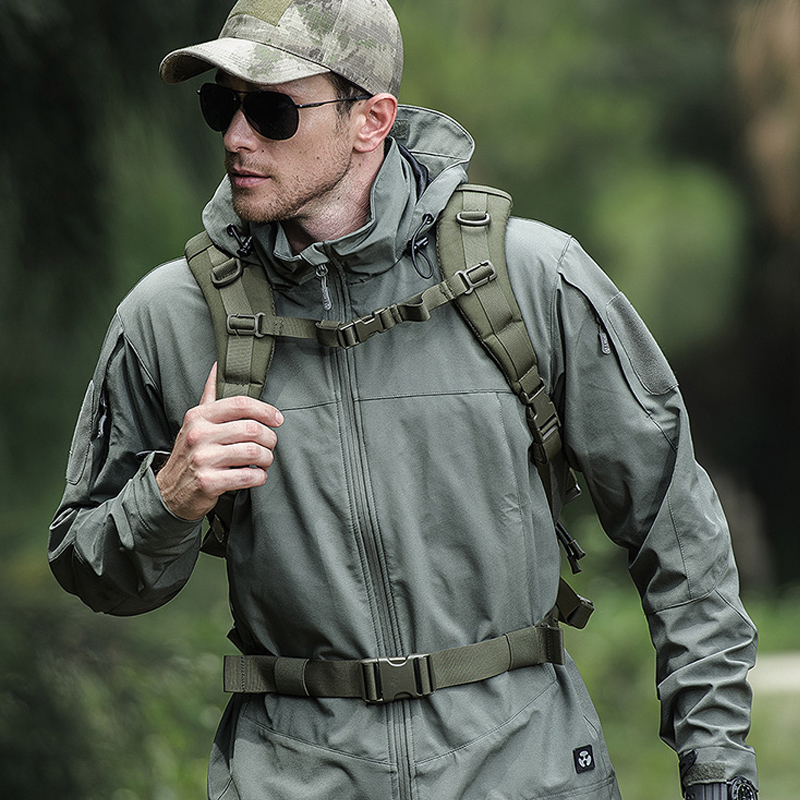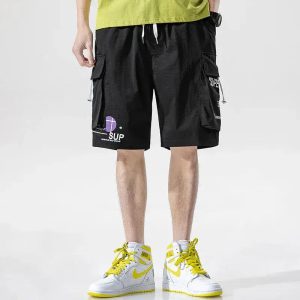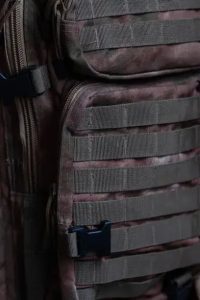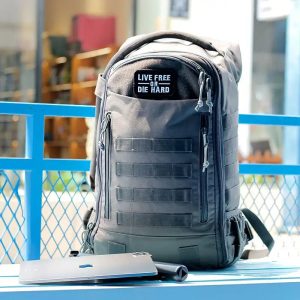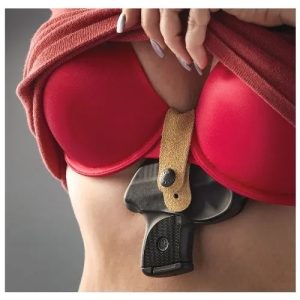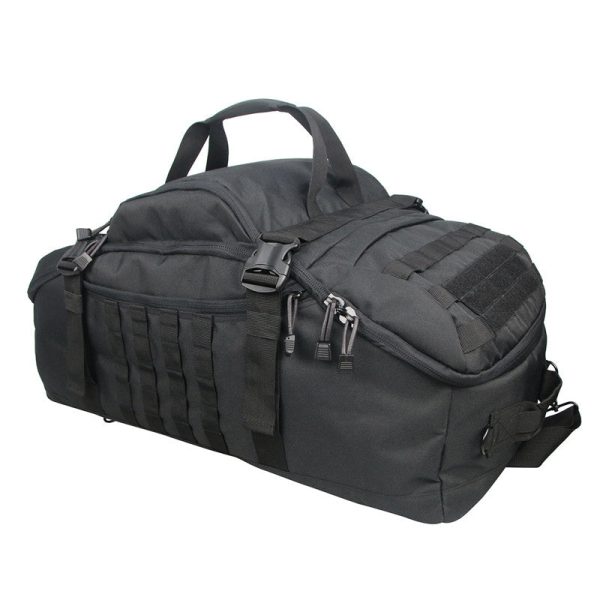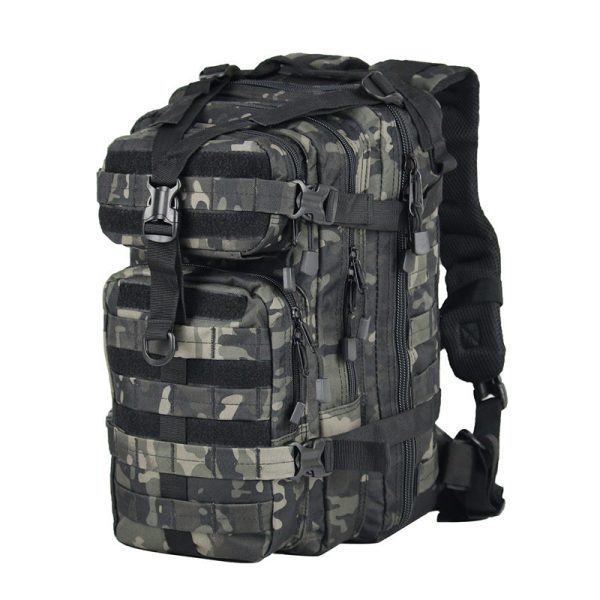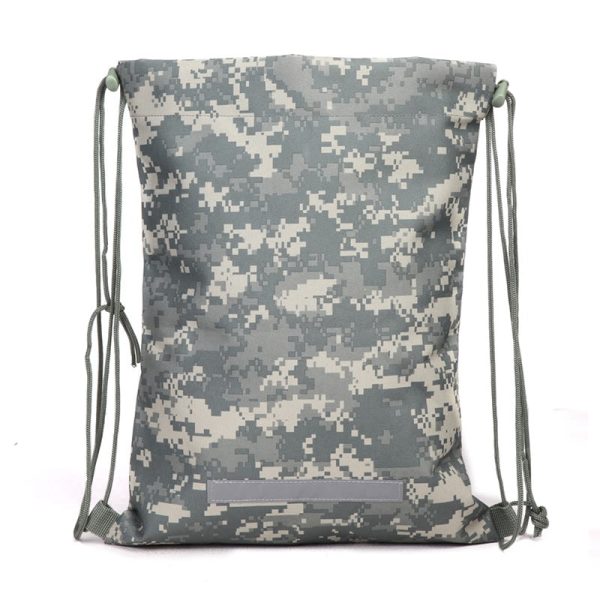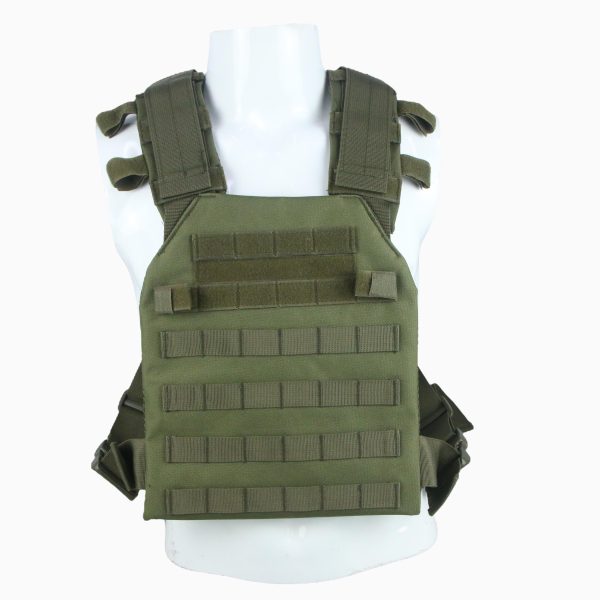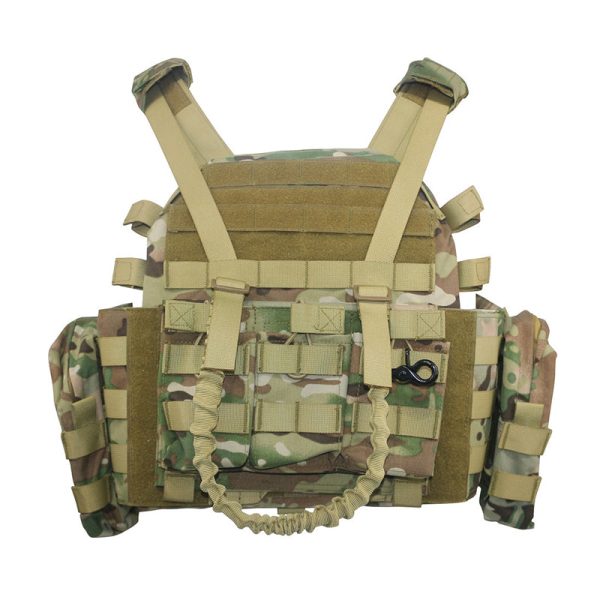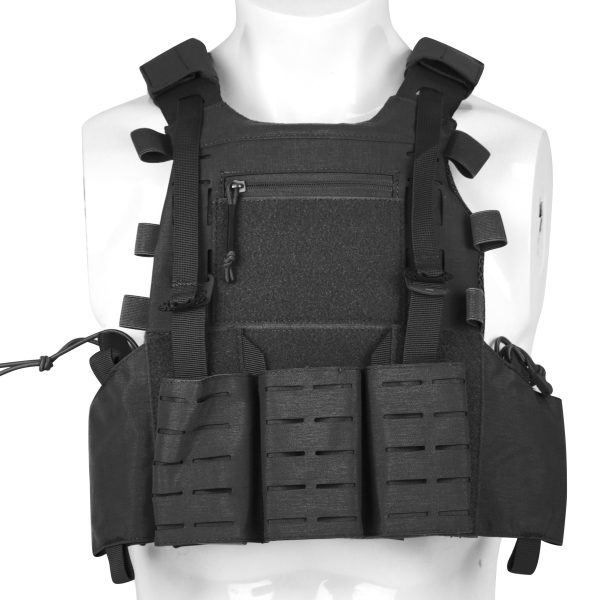Setting up a حامل اللوحة can make a big difference in both your comfort and efficiency during tactical operations.
However, finding the right setup can be challenging. In this guide, we’ll explore practical plate carrier setup ideas that will help you achieve optimal performance.
We’ll try to cover everything from positioning your gear to balancing weight and ensuring quick access to your essentials.
Start with the Basics: Positioning Your Plates
First of all, make sure that your plates are correctly positioned. They should cover your vital organs.
The top of the front plate should sit at the level of your clavicle, while the back plate should cover your shoulder blades.
This placement ensures maximum protection without hindering your movement.
Organize Your Front Panel
Your front panel is prime real estate. Start by placing your primary magazines here.
Generally, three to four magazine pouches will fit comfortably. Place them in a central location for easy access.
Additionally, consider adding a kangaroo pouch for extra storage.
Next, think about adding a radio pouch. Communication is crucial, and having your radio within reach is essential.
Place it on the side of your front panel to avoid interference with your magazines.
If you use a pistol, consider adding a pistol mag pouch. This can go on the outermost part of the front panel to keep it accessible but out of the way of your primary magazines.
Utilize the Side Panels
Side panels are great for secondary items. Consider placing a medical pouch on one side. This pouch should include essentials like a tourniquet, bandages, and other first-aid supplies. Make sure it’s easily accessible with either hand.
On the other side, you can add utility pouches. These are perfect for carrying tools, multi-tools, or extra ammunition. Keep these pouches organized to avoid fumbling when you need something quickly.
Also, consider adding grenade pouches if your mission requires them. Place these on the side panels for easy access without cluttering your front panel.
Back Panel Considerations
Your back panel should be reserved for less frequently used items. A hydration bladder is a popular choice. Staying hydrated is important, and a bladder allows you to carry water without using your hands.
Besides, consider a small backpack or assault pack. This can store extra gear, such as a jacket, additional ammo, or mission-specific items. Make sure it’s easy to detach if needed quickly.
If your mission involves breaching, consider adding a breaching tool holder on the back panel. This keeps the tools out of the way but accessible when needed.
Balancing Your Load
Weight distribution is key to comfort. An unbalanced plate carrier can cause fatigue and reduce mobility.
To avoid this, ensure your load is evenly distributed. Check that your magazines, pouches, and other gear don’t pull your carrier to one side.
Quick-Release Mechanisms
Consider adding quick-release mechanisms to your setup. These allow you to get rid of your plate carrier quickly in an emergency.
This feature is particularly useful in waterborne operations or if you need to lighten your load instantly.
Comfort Adjustments
Finally, don’t forget about comfort. Adjust your shoulder straps and cummerbund to fit snugly but not too tight.
Padding can make a big difference, especially during long missions. Add padded shoulder covers and a padded cummerbund if your carrier doesn’t already have them.
Setup for Different Situations
Different situations call for different plate carrier configurations to get the most out of them and be able to adapt. Here are some setups that are tailored to different environments.
a. Minimalist Plate Carrier Setup
بالنسبة لأولئك الذين يقدّرون قيمة التنقل والعتاد خفيف الوزن، فإن الإعداد البسيط هو الأمثل. يركّز هذا الإعداد على العناصر الأساسية، مما يقلل من الحجم الكبير دون التضحية بالوظائف.
- اللوحات: اختر الألواح خفيفة الوزن ومتعددة المنحنيات التي توفر إمكانية التنقل دون المساس بالحماية. ابحث عن الألواح المصنوعة من مواد مثل البولي إيثيلين أو السيراميك المركب.
- الحقائب المغناطيسية: حمل 2-3 مخازن ذخيرة. اختر الحقائب منخفضة الحجم لتقليل الحجم. تُعد الحقائب المرنة خيارًا رائعًا للاحتفاظ بالذخائر بشكل آمن مع الحفاظ على المظهر الجانبي النحيف.
- IFAK (مجموعة الإسعافات الأولية الفردية): قم بتضمين الأساسيات مثل ضمادات النزف والضمادات وأختام الصدر والمواد المرقئة. ضعها في متناول اليد، ويفضل أن تكون في مقدمة الحامل.
- حقيبة الراديو: تعتبر الحقيبة اللاسلكية المدمجة للاتصالات أمراً بالغ الأهمية. تأكد من وضعها في مكان يسهل الوصول إليها.
- الترطيب: قم بتوصيل حاملة ترطيب رفيعة أو استخدم مثانة مدمجة في حاملة الألواح للحفاظ على ترطيب جسمك دون إضافة الكثير من الوزن. ابحث عن حاملات الترطيب التي يسهل إعادة تعبئتها وتنظيفها.
هذا الإعداد مثالي للبيئات سريعة الوتيرة حيث تكون السرعة وخفة الحركة أمران أساسيان. فهو مصمم ليُبقيك خفيفاً على قدميك وجاهزاً للعمل.
b. Special Forces Plate Carrier Setup
تحتاج القوات الخاصة إلى إعداد يجمع بين الحماية المتينة ومجموعة من الأدوات التكتيكية. يجب أن تخدم كل قطعة غرضاً محدداً، مصممة خصيصاً للعمليات عالية الخطورة.
- اللوحات: استخدم ألواح من المستوى الرابع لتوفير أقصى حماية ضد طلقات البنادق. ضع في اعتبارك الألواح المستقلة التي لا تحتاج إلى دعامة دروع لينة.
- الحقائب المغناطيسية: احمل ما لا يقل عن 4-6 مخازن ذخيرة على الأقل لعمليات إطلاق النار الممتدة. استخدم أكياس الذخيرة المكدسة المزدوجة لزيادة المساحة.
- IFAK: مجموعة أدوات طبية شاملة تتضمن مستلزمات طبية متطورة للصدمات مثل إبر تخفيف الضغط وأختام الصدر وعوازل الصدر وعوازل النزيف وعوامل التخثر.
- معدات الراديو والاتصالات: أجهزة لاسلكية وهوائيات متعددة للاتصال الآمن. ضمان التكرار مع أجهزة اتصال احتياطية.
- الترطيب والتغذية: تضمين مثانة ترطيب ومساحة لألواح الطاقة أو المواد الهلامية. ضع في اعتبارك حقيبة وجبات خفيفة صغيرة يسهل الوصول إليها.
- الحقائب المتعددة الاستخدامات: لتخزين الأدوات المتعددة، والبطاريات الإضافية، والأربطة السحابية، وغيرها من الضروريات الأخرى. تأكد من أنها متوافقة مع MOLLE للتخصيص.
- حقائب القنابل اليدوية: اعتمادًا على متطلبات المهمة، قم بتضمين أكياس للقنابل اليدوية الشظوية والدخانية. ضعها للوصول السريع إليها.
يجب أن يكون من السهل الوصول إلى كل قطعة من المعدات لضمان سرعة الاستجابة في المواقف الحرجة. هذا الإعداد مصمم خصيصاً لتعدد الاستخدامات والجاهزية في البيئات التي لا يمكن التنبؤ بها.
c. Police Plate Carrier Setup
يحتاج ضباط الشرطة إلى تحقيق التوازن بين الحماية وسهولة الوصول، مع معدات مصممة خصيصًا لمهام إنفاذ القانون.
- اللوحات: Level III or IIIA plates. Consider plates with trauma pads to reduce blunt force impact.
- الحقائب المغناطيسية:: 2-3 مخازن ذخيرة تكفي للاشتباكات الفورية. استخدم أكياس ذخيرة سريعة التحرير لإعادة التعبئة السريعة.
- IFAK: Basic first aid supplies tailored to treating trauma quickly, including tourniquets, gauze, and chest seals.
- الراديو: معدات اتصال موثوقة للتنسيق، موضوعة لسهولة الاستخدام.
- كاميرا الجسم: غالباً ما تكون مطلوبة لتسجيل التفاعلات. تأكد من تركيبها بإحكام وعدم إعاقة الحركة.
- الحقائب المتعددة الاستخدامات: لحمل الأصفاد والمصابيح الكهربائية والقفازات الإضافية ودفاتر الملاحظات. استخدم الحقائب القابلة للتمزيق للوصول السريع.
- رذاذ OC والعصا: خيارات غير قاتلة للسيطرة على المشتبه بهم. ضعهم حيث يمكن الوصول إليهم بسهولة دون التداخل مع المعدات الأخرى.
ويضمن هذا الإعداد حصول الضباط على الأدوات اللازمة مع الحفاظ على إمكانية التنقل والراحة أثناء الدوريات. وهو مصمم لدعم الاستجابة السريعة والوظائف المتنوعة.
d. Tactical Plate Carrier Setup
بالنسبة للسيناريوهات التكتيكية مثل عمليات سوات أو التفاصيل الأمنية، من الضروري وجود إعداد أكثر قوة. يجب أن يتعامل هذا الإعداد مع مجموعة متنوعة من المواقف.
- اللوحات: ألواح من المستوى الرابع للبيئات عالية الخطورة. ضع في اعتبارك الألواح المغطاة بطبقة طلاء شظايا لتقليل التشظي.
- الحقائب المغناطيسية: 4-6 مخازن ذخيرة للتعامل مع الاشتباك لفترات طويلة. استخدم أنظمة الاحتفاظ الآمنة لمنع فقدان الذخيرة.
- IFAK: إمدادات طبية متطورة للرعاية الفورية، بما في ذلك أدوات إدارة مجرى الهواء وعوامل الإرقاء.
- الراديو: أجهزة اتصال آمنة ومشفرة. ضمان التكرار باستخدام أجهزة لاسلكية احتياطية.
- أدوات الاختراق: قم بتثبيت أكياس لأدوات الاختراق الصغيرة مثل مطرقة ثقيلة أو قاطع البراغي أو أداة هاليجان. تأكد من تثبيتها بإحكام لمنع الحركة.
- الترطيب: نظام ترطيب متين للمهام الطويلة. ضع في اعتبارك مثانات الترطيب المعزولة للحفاظ على برودة الماء.
- القنابل الضوئية والقنابل الدخانية: للتضليل والإخفاء. استخدم الحقائب الآمنة المزودة بآليات سريعة التحرير.
يوفر هذا الإعداد تعدد الاستخدامات والجاهزية لمختلف العمليات التكتيكية. ويضمن أن تكون جميع الأدوات الأساسية تحت تصرفك دون المساس بإمكانية التنقل.
e. Civilian Plate Carrier Setup
يحتاج المدنيون الذين يستعدون لحالات الطوارئ أو الدفاع عن المنزل إلى إعداد عملي وسهل الإدارة.
- اللوحات: Level III plates for a balance of protection and weight. Ensure they fit well within the carrier for comfort.
- الحقائب المغناطيسية: 2-3 magazines, enough for self-defense. Use simple, reliable retention systems for ease of use.
- IFAK: اللوازم الطبية الأساسية لعلاج الإصابات الشائعة، بما في ذلك الضمادات والضمادات والمناديل المطهرة.
- حامل الراديو أو الهاتف: للاتصال في حالات الطوارئ. ضعه للوصول السريع.
- مصباح يدوي: مصدر ضوء يمكن الاعتماد عليه في حالات انخفاض الرؤية. ضع في اعتبارك المصابيح الكاشفة القابلة لإعادة الشحن مع إعدادات سطوع متعددة.
- الحقائب المتعددة الاستخدامات: لحمل الضروريات اليومية مثل أداة متعددة وبطاريات إضافية وسكين صغير.
- ذخيرة إضافية: تخزينها في مكان يسهل الوصول إليه ولكن آمن. استخدم حقيبة صغيرة أو حامل مثبت على الحزام.
This setup ensures civilians can react quickly to threats while maintaining a manageable loadout. It’s designed to be ready at a moment’s notice and provide peace of mind.
نصائح إضافية
- Identify Your Dominant Hand: Place essential items where your dominant hand can access them quickly. For instance, if you’re right-handed, your primary magazines should be easily reachable with your right hand.
- Use Color Coding: Use color-coded pouches or attachments to quickly identify different items. This can save precious seconds in high-stress situations.
- Regularly Check Your Gear: Before any mission, double-check that all pouches are secure, zippers are closed, and nothing is loose. Routine checks can prevent gear from falling off or getting lost.
- Train with Your Setup: Spend time training with your plate carrier setup. Practice drawing magazines, using medical gear, and moving with your loadout. The more familiar you are with your setup, the more efficient you’ll be in real situations.
Test and Refine Your Setup
Once you have everything in place, test your setup. Move around, run, and practice accessing your gear. Make adjustments as needed.
The goal is to create a setup that allows for smooth, efficient movement and quick access to your essentials.
الخاتمة
In short, setting up your plate carrier effectively involves careful consideration of each component’s placement and purpose.
By organizing your front, side, and back panels, balancing your load, and ensuring comfort, you’ll be well-prepared for any situation.
Regularly testing and refining your setup is key to maintaining peak performance. Remember, a well-thought-out plate carrier setup can greatly enhance your efficiency and comfort in the field.
FAQs on Plate Carrier Setup
Q. How Many Mags Should Be on a Plate Carrier?
A: The number of magazines on a plate carrier depends on your mission requirements and personal preferences. A common setup is to carry between 3 and 6 magazines, which ensures you have enough ammunition for sustained engagements while balancing weight and mobility. When deciding on the number of mags, consider the type of mission, duration, and terrain you will be operating in.
Q. How Far Down Should a Plate Carrier Be?
A: The top of the front plate should be at the level of your sternal notch (the small dip at the base of your neck), and the bottom of the plate should cover your upper abdomen. This position protects your vital such as the heart and lungs without limiting your movement.

